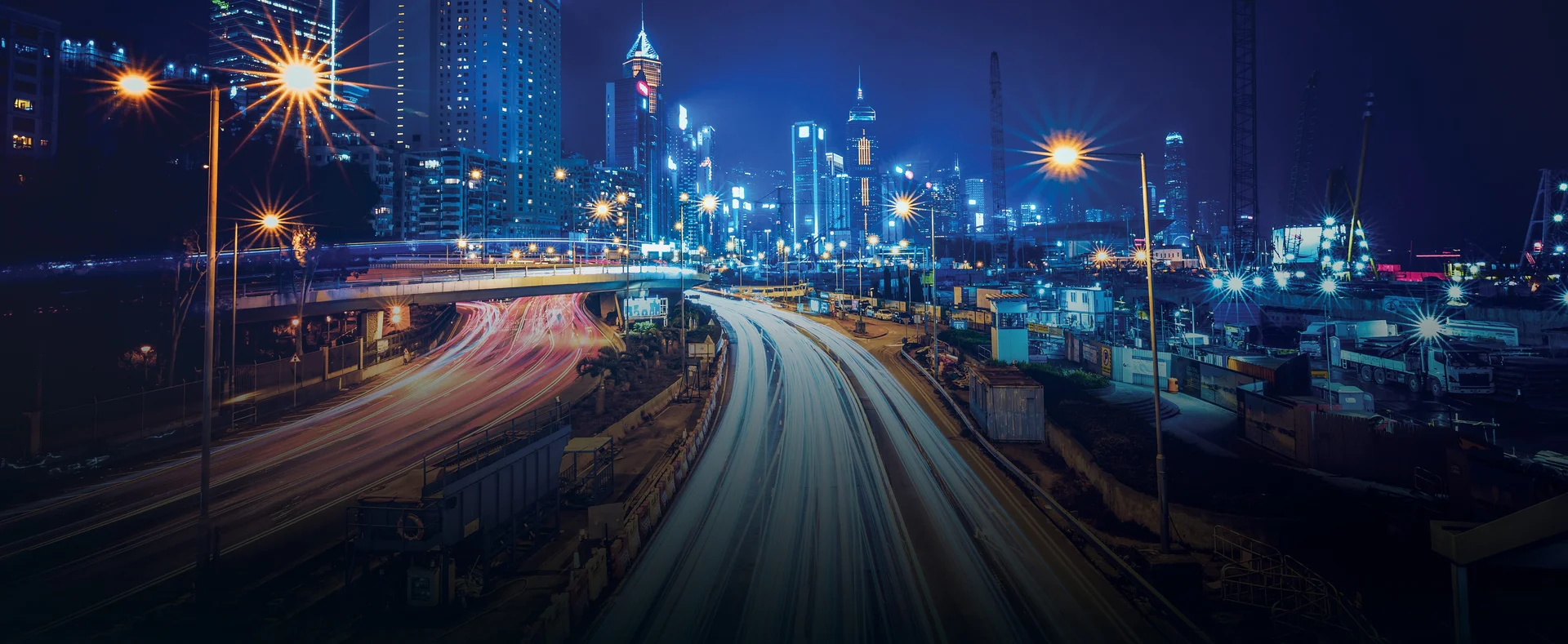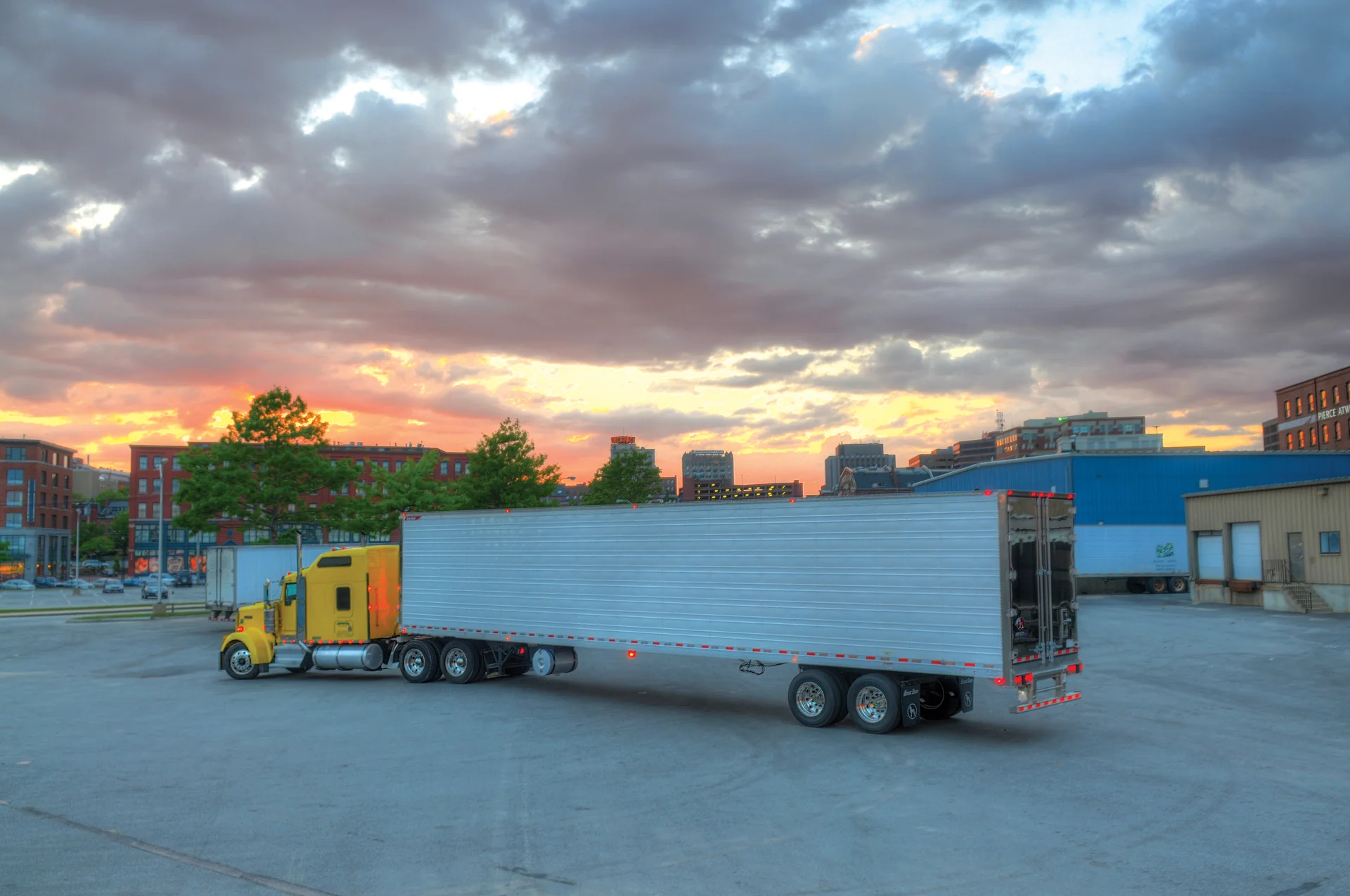In only the past five to ten years, sophisticated technologies have shifted the way we move about many of today’s urban environments. From pedestrians to cyclists to fleets carrying trailers full of freight, advancing from Point A to Point B in smart cities around the globe now means moving in harmony with a highly developed system of sensors, Bluetooth, beacons, drones, robotics, and digitally embedded roadways.
For fleets, this is a change to the delivery norm that cannot be ignored, says Great Dane Executive Director of Strategy Dan Bentz. He says today’s smart city technology suite is redefining not just how a truck, trailer, rail, drone, or another type of vehicle interacts within the environment, but also how the contents of those vehicles communicate, such as a smart pallet notifying drivers it is ready to be picked up or a package with smart tape telling a business it has been delivered.
Bentz says fleets that want to keep up with smart city development need to be thinking long-term about their equipment—not just about different products, but about the ecosystem those products interact with in day-to-day work.
“For fleets in general, the first step I would suggest is looking at where they interact: roadways, warehouses, distribution centers, yards, ports, and definitely customer locations are a few examples,” Bentz says. “Grasping what technology is being used is essential; identifying the technology plans of what is coming is maybe even more essential.”
Many fleets are already doing this, Bentz says, by looking into smart warehouses and robotics. For some fleets, exploratory investments in this area begin with boosting telematics capabilities, with some being happy with just GPS, or perhaps some RFID technology being put in place.
However, Bentz says many industries aren’t stopping there, and are quickly discovering what robotics, automation, and connected devices can do for efficiency within their organizations.
“Gentle robotics, for example, utilizes human workers as ‘trainers’ for multiple robots on the floor. As the human guides them, the A.I. learns and adjusts robotic actions in future work. The expectation is, of course, that the automation will make its way into the logistics part of the operations: loading, unloading, shifting trailers…whatever is needed,” Bentz says. “The partnership of Kroger and Ocado in recent years is a great example of how an organization can readjust to embed technology into the everyday work life of an operation.”
The Advent of Smart Logistics
Today’s smart city environment has successfully connected equipment (such as beacons and sensors, which tend to be automated) and personal devices (such as phones and wearables), allowing these to work together to try and create a seamless and efficient logistical experience. However, as Bentz points out, this ecosystem is far from “seamless”.
“Some cities do it, some don’t. Some areas have connectivity, some don’t. Signals within certain areas are strong, some aren’t,” Bentz says. “All of this is due to the effort of trying to fit a futuristic desire of connectivity into an ecosystem that was not designed for it.”
Bentz says we can expect smart cities of the 2030s to be different. These ecosystems of seamless connection will be designed from the ground up to better connect living, business, and public locations. And the tools we use, such as personal and logistic vehicles, will know how to interact both V2V (vehicle-to-vehicle) and vehicle-to-building.
“A vital part of this mix is the advent of smart logistics, meaning items such as trucks, trailers, truck bodies, distribution centers, warehouses, ports, airports, railways, roadways, intersections, and airspace having the ability to connect, interact, and react to what is around them and what they are engaging with,” Bentz says.
Great Dane recognizes that the current offering and future possibilities of what could be called Internet of Things (IoT) logistics should be one of the main drivers in today’s production of anything involved in logistics, including trailers and truck bodies. This, in part, is what led the company to develop FleetPulse, which is now a standard feature on each of the company’s newest dry and refrigerated trailers.
“Most of the trailers and truck bodies are not short-term purchases; they are expected to still be utilized over the next five, ten, even fifteen years,” Bentz says. “The purpose of FleetPulse from the very beginning was not just GPS, but connected, seamless, transparent, and efficient technology for logistics interactions in a smart environment, laying the runway for communication between trailers, with the truck, on a yard, on the road, with a distribution center, with the loads, and even with a mobile services mechanic.”
“Trailers and truck bodies need to ‘have conversations’ in the future; our purpose with FleetPulse was to give them that voice and hearing.”
Next Steps
Bentz says the advancement and proliferation of warehouse management systems (WMS) and order management systems (OMS) is helping drive expectations both inside and outside the walls of warehouses and distribution centers. He says these systems are becoming more intelligent and more seamless with each other, which points directly to the other elements in the ecosystem, like pallets, material handling, trailers, yard logistics and ports, having to accelerate to catch up.
“Technology, in general, has a way of leaving people and companies behind because it can accelerate quickly. A fleet doesn’t want to be caught by surprise that way,” Bentz adds.
Fleets that want to be ready for the smart cities of the next decade shouldn’t wait to investigate what telematics IoT components are driving toward a seamless, connected, transparent, and efficient design and future.



